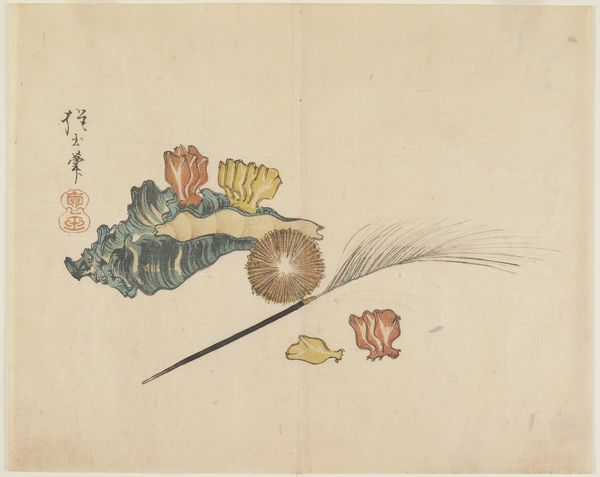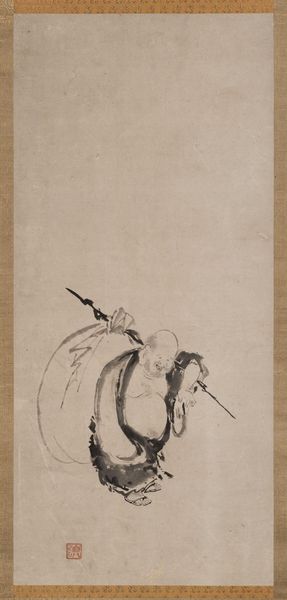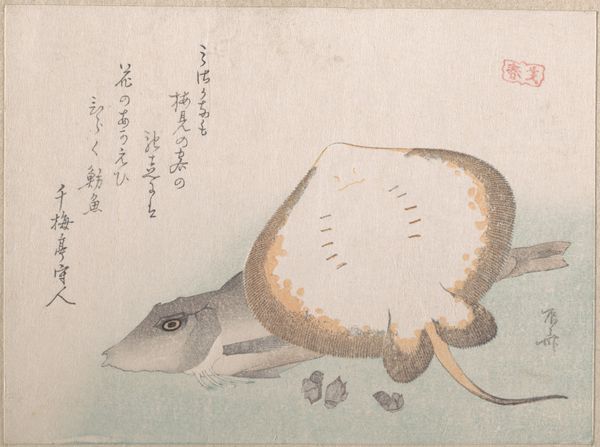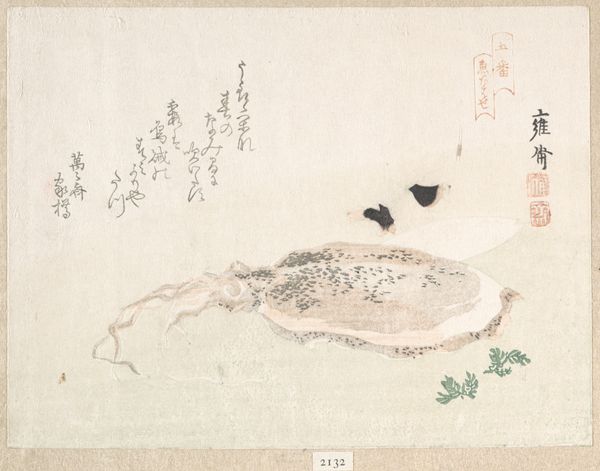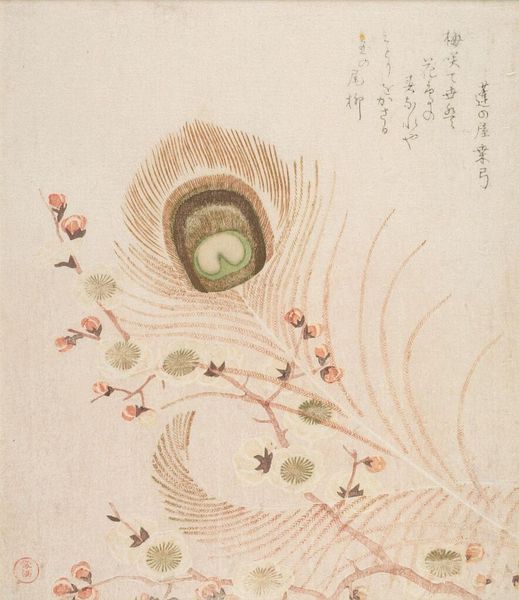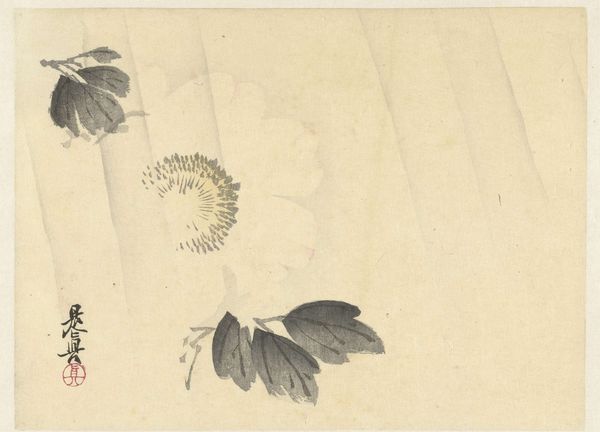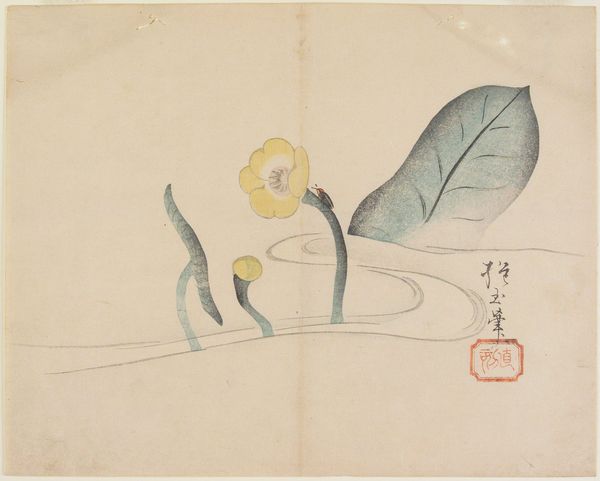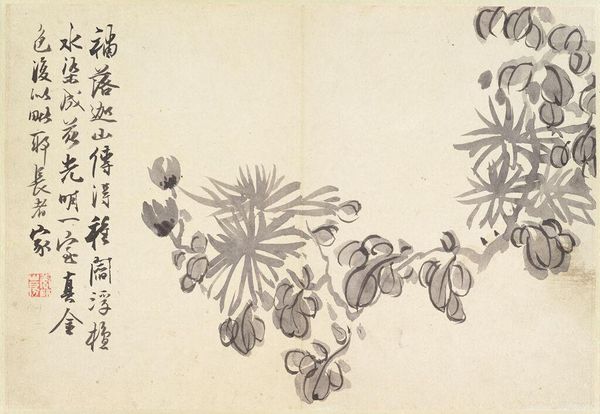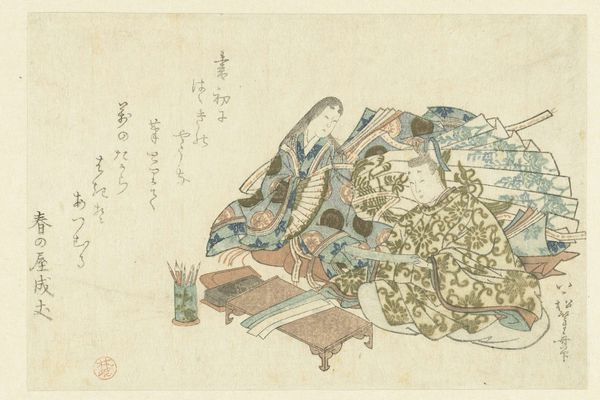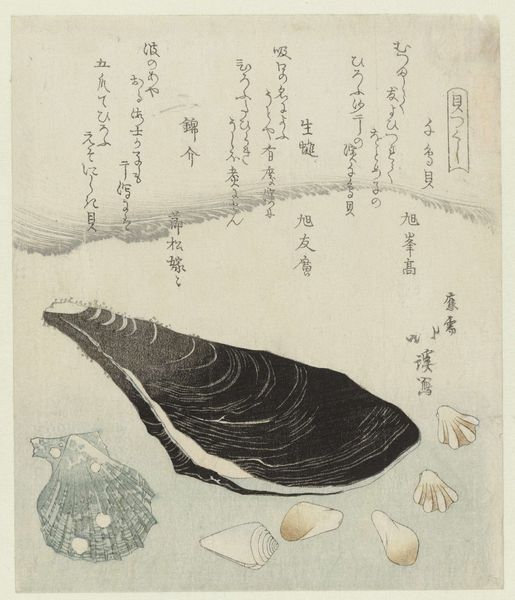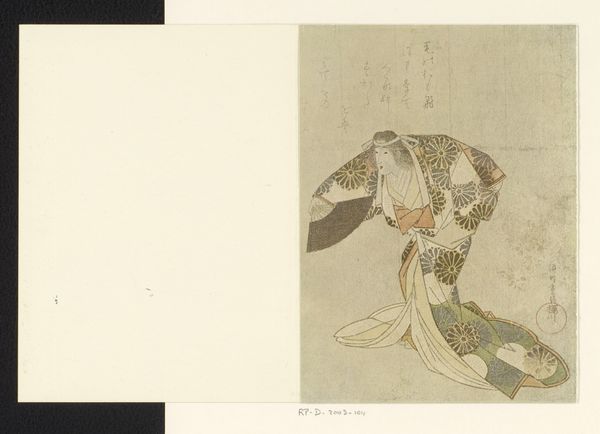
drawing, paper, ink
#
drawing
#
pencil sketch
#
asian-art
#
landscape
#
figuration
#
paper
#
ink
#
realism
Dimensions: height 145 mm, width 256 mm
Copyright: Rijks Museum: Open Domain
Curator: Looking at "Dead Waterbird" by Yamamoto Baiitsu, created sometime between 1800 and 1900 using ink on paper, I’m immediately struck by the fragility it conveys. Editor: Fragility, yes, but also something… vulnerable in its stillness. The drawing is spare, and there's a certain brutal honesty in its presentation of death. It really pulls focus to the materiality of existence, you know? Curator: Indeed. Consider the artist’s delicate strokes defining the feathers—notice how they create volume through tonal variation rather than explicit outlines. It's a marvelous example of implied form within negative space. Editor: For me, it's less about form and more about process. Baiitsu’s deliberate choice of ink on paper invites questions about availability and cost, which inevitably brings in conversations about craftsmanship during this era. Were such materials a luxury? What impact might these concerns have had on art making? Curator: A valid point, certainly. Yet consider also how ink lends itself perfectly to capturing nuanced shading, a sophisticated formal technique utilized in landscape drawing. Editor: And the paper itself is relevant. Was this sketch done on mass-produced paper, impacting artistic possibilities and challenging conventional distinctions? What's particularly striking here, in the way the legs just *end* – the paper quite visibly delimiting a violent finish. Curator: The unfinished quality only adds to the emotional impact. And I notice too the economy of line…so essential. Every stroke contributes to the overall composition. Editor: I think it underlines an exploration of production: to reflect on where this drawing lived culturally as object of artistry, challenging conceptions. Curator: Ultimately, for me, the aesthetic composition offers a refined view into artistic skill and form itself. Editor: But without context and materials, this remains inaccessible! What were people *doing* while Yamamoto was drawing, using and consuming? It really makes you question what’s left for birds that were not considered "objects of artistry.”
Comments
No comments
Be the first to comment and join the conversation on the ultimate creative platform.
